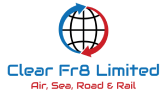[vc_row][vc_column]
Air Freight
For larger shipments several types of Universal Load Devices (ULD’s) are available, these are essentially airline containers that fit into the cargo hold of an aircraft and maximise the space. These can also be fitted out with bars to allow for the movement of hanging garments thus saving on having to have garments re-processed on arrival. As well as the airline’s own offerings we offer a bespoke service where a frame is built and lined to the exact requirement of the cargo ensuring that our clients are not paying to move empty space. ULD’s (The airlines and our own builds) can also be configured to move a mixture of hanging and boxed cargo.
Specialist services like arranging Air Charters are also available for those time critical movements that production lines rely upon.[/vc_column_text][/vc_column_inner][vc_column_inner width=”1/3″ css=”.vc_custom_1525086778092{background-color: #dd3333 !important;}”][vc_column_text]
Call an advisor today!
tel:+44 (0)1304 806425
[/vc_column_text][/vc_column_inner][/vc_row_inner][/vc_column][/vc_row][vc_row][vc_column width=”1/2″]
AIR FREIGHT SERVICES
- Direct Flights for fast transit (subject to route)
- Import/Export Customs Clearance
- Non Direct Flights for lower costs (but longer transit)
- Consolidation Services (Co-loading with other people’s goods)
- Cargo Insurance

